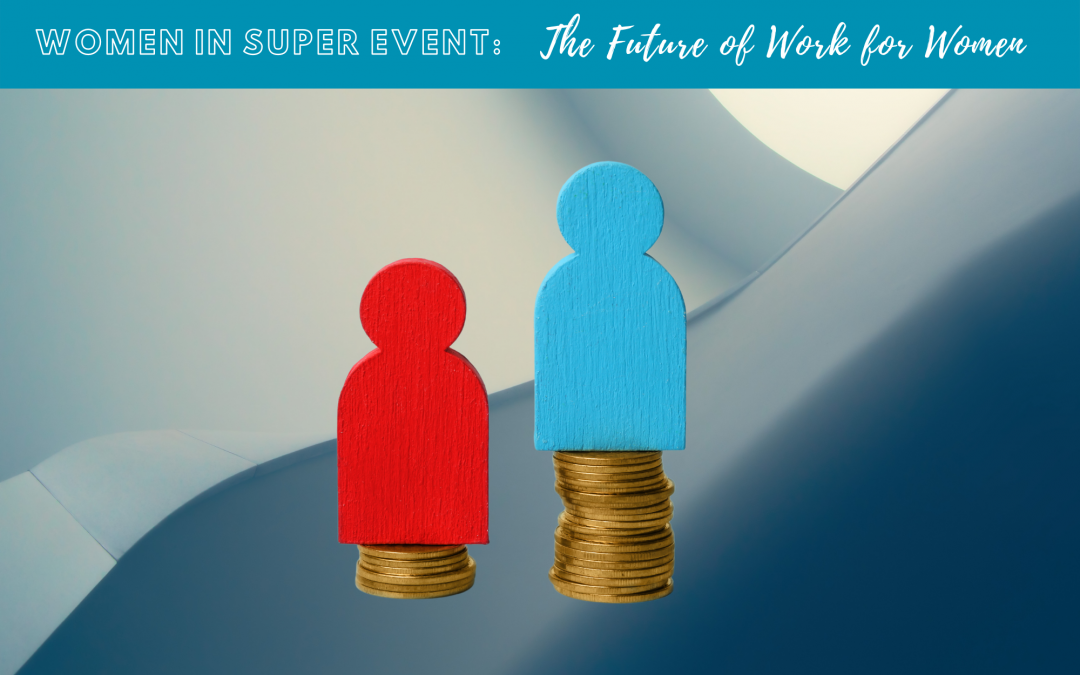Graduate Consultants, Courtney and Tana share their key insights from the third and final session at last week’s Women in Super event. This session was presented by Gemma Pinnell (Director of Strategic Engagement, ISA); Georgia Brumby (Director of Advocacy, ISA) and Steve Bracks (Chair, Cbus). Thank you to Women in Super for organising this event and for continuing to represent the voice of women in superannuation.
With more women joining the workforce every year, and more employers advocating for the importance of senior women in their organisation, why are females retiring with, on average, a third less savings than men?
Surprisingly, 68% of Australians believe that they are still getting paid superannuation whilst on parental leave, hence awareness is low. The inequality in superannuation outcomes means that, overall, females are worse off than males (mostly due to unpaid work whilst raising of children). The ISA’s 2021 report on ‘Paying super on parental leave’ shows that:
- Older women are the fastest growing cohort for homeless in Australia.
- Single women are most likely to live in poverty compared with males.
- Women make up most pension payments.
- Women older than 60 made up the biggest proportion of Job Seeker recipients before the COVID-19 pandemic.
- ISA analysis shows Australian mothers have missed out on 1.6 billion in payments, such as the Commonwealth Parental Leave Pay.
Additionally, other data shows that:
- Taking 5 years off to look after children costs a woman (on average) $100,00 off their retirement savings.
- If not changed, the super gap will still exist out to 2061 and beyond.
Changes required at all levels
Whilst these statistics are alarming, changes can be made at all levels, as follows:
Federal Government
- Commonwealth Parental Leave Pay (CPLP) is the only parental leave available for the 1 in 2 Australians who work in the non-government sector, with over 99% of women taking up this scheme. If the Commonwealth paid super on this scheme, a mother of two could be $14,000 better off at retirement.
State and Territory Governments
- Enforce rules that ALL employees of the state are paid super on parental leave.
Private Employers
- Taking it upon themselves to pay super on parental leave (putting pressure on governments to do so).
- Women (with 2 children) on a median wage, receiving both the CPLP and employer funded parental leave, would be $26,500 better off at retirement.
Percentage of industries, that pay parental leave superannuation, needs to increase
The ISA analysis shows that:
- Only 6.9% of enterprise agreements include a provision to pay superannuation on paid parental leave. This means over 2.3 million employees do not receive it under their enterprise agreement.
- If all employers were to pay super on their paid parental leave, around an additional 1.7 million women would benefit.
Advocacy required for awareness and policy changes
The following integrated advocacy strategy was proposed by ISA for advocating change at both Federal and State levels:
- Establish a credible policy evidence base
- Localise data
- Public relations in local media markets highlighting how many women have missed out
- Targeted government relations, including MP briefings
- Advertising campaign using real members to highlight the inequity
- Positive legislative change for members.
As the evidence shows, considerable improvement is required to improve gender equality for women in regards to their employment and superannuation benefits. Whilst both Federal and State/Territory Governments have an important role to play, employers have an opportunity to lead the way in this space – both in terms of paying super on parental leave but also advocating for gender equality generally.
Summary provided by Courtney Andrews and Tana Pasipanodya, Graduate Consultants


Recent Comments